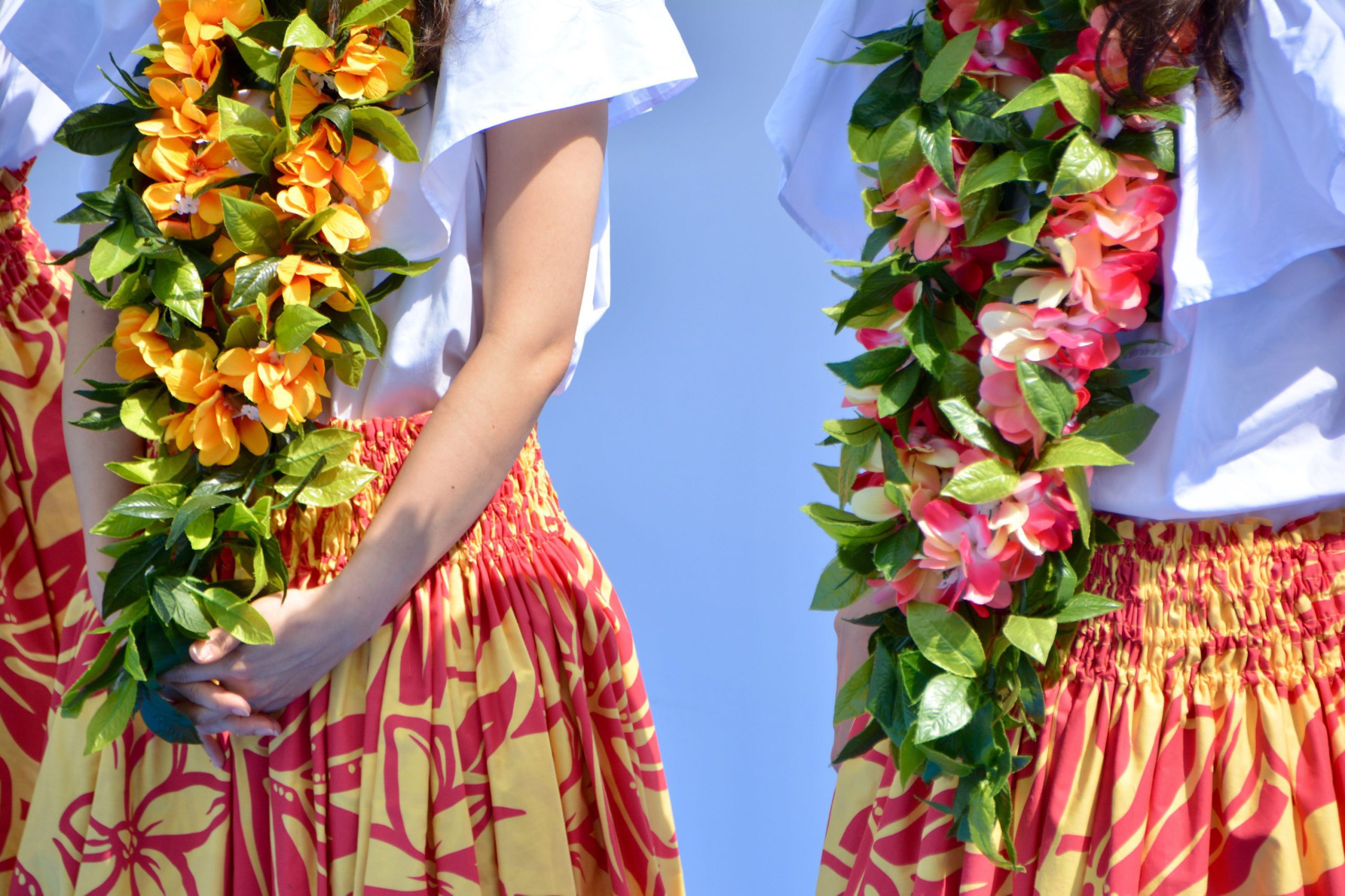The History of Lūʻau
Before Lūʻau, There was ‘Aha‘aina
The tradition of Lūʻau dates back to hundreds of years and goes by a different name, ‘aha‘aina’. Ancient Hawaiian referred to this tradition as ” ʻahaʻaina ” which translates to “gathering meal”; ‘aha means ‘gathering’ and ‘aina means ‘meal’. ‘Aha‘aina was a more formal event than today’s lūʻau, these gatherings focused on the traditions and ceremonies. They were held to celebrate a commendable occasion such as a battle victory, the launch of a new canoe, or a special achievement to honor the Hawaiian Gods rather than a community feast. At a ‘aha‘aina, certain foods were prepared as a way to represent symbols and attributes to the reason for celebration. The use of mele (songs), oli (chants), and hula were to provide context and meaning rather than entertaining. Mele and oli often set the tone and the narrative of the place, the genealogy of the participants, or the significance of the occasion. Hula then visually embodies these narratives.
Traditionally, women and those of lower class in society were forbidden to feast with men; those of lower class were usually outcasts, slaves, and war captives. Foods like bananas, pork, and certain kinds of reef fish such as moi that were often served in a ‘aha‘aina, were not allowed to be eaten for women. This was due to the kapu system that was followed by Hawaiians which restricted who could eat together, separate dining for men and women, and certain foods were exclusive to chiefs and men
Lūʻau in the 19th Century
In 1819, upon the lift of the kapu system by King Kamehameha II and Queen Ka’ ahumanu, women were allowed to dine with men. That’s when ” ʻahaʻaina ” became known as a “lūʻau”, the word itself refers to the young, tender leaves of the taro plant and also the name of a traditional local dish. These leaves were traditionally used to wrap food, particularly a dish of taro leaves, coconut milk, and often chicken or octopus, that was cooked in an imu – traditional Hawaiian underground oven. The abolishment of the kapu system by King Kamehameha II, marking a shift towards the modern lūʻau that we know today.
In 1830, a vital part of lūʻau, hula, was banned by Queen Kaʻahumanu who converted to Christianity previously. Under Christian missionaries’ influences and Christian beliefs, the queen made it illegal to perform hula in public, because hula was seen as a pagan ritual under the eyes of Christianity. However, hula found its way back to the life of Hawai‘i people not long after the ban due to Queen Kaʻahumanu’s death in 1832. Despite hula re-entering the public life of Hawaiians, on paper, it was still banned. It wasn’t until the reign of King Kalākaua from 1874 to 1891, hula met its revival. King Kalākaua actively encouraged the revival of many other cultural practices, including hula. At his coronation in 1883, hula was prominently featured there, marking its return as the public celebration.
Upon its renaissance, the chants accompanying hula dances shifted in tone. They became more melodic and song-like as well as the subject of hula also began to shift. Hula had traditionally told ancient stories of gods and the islands’ birth. This new hula focused instead on the present, it glorified the king and queen and described the beauty of Hawaiian nature.
After the annexation of Hawai‘i to the United States, lūʻau and hula saw a decline for decades due to the outlawing of many Hawaiian traditions by the United States. However, like before, Hawaiian people always find their way back to their culture and traditions.

The Meaning and Significance of Lūʻau
Celebration and Community
More than a fancy feast, lūʻau brings a deeper meaning to the Hawai‘i people. Lūʻau is the tradition that brings Hawaiians to a brighter future where men and women can sit together and eat. The significance of lūʻau shifted from centering around celebrating special occasions like the birth of a child, a successful harvest, and honoring guests to a feast that brings locals and visitors together.
Symbolism in Lūʻau
Traditional dishes like poi (made from taro), kalua pig, lomi salmon, and haupia are more than food to eat, they carry cultural significance that connect with Hawaiian history and beliefs. Ingredients like taro, fish, pork, coconut, and tropical are believed to show the Hawaiian value of mālama ʻāina (caring for the land) and living in harmony with nature. The preparation of the foods in a lūʻau reinforces the Hawaiian value of ‘ohana (family), beyond that the kalua pig is cooked in an imu, a traditional underground oven.
Lei Tradition
If hula is a vital part of lūʻau, then lei is the gift that keeps lūʻau festive and respectful. Leis are commonly exchanged at important events such as weddings, birthdays, and at lūʻau. Leis are made from flowers, leaves, shells, nuts, or feathers, representing a close relationship of Hawaiian with nature and the land. They are often given to guests at a lūʻau upon arrival to symbolize love, respect, and the Aloha spirit.
Cultural Expression
Lūʻau in the present time is a cultural expression for Hawaiian people to connect with their thousand years old traditions. Through the music, traditional cuisine offers a glimpse and appreciation into Hawaiian heritage. Although lūʻau has evolved from its original form, it still carries the most important trait of the Hawai‘i culture: sharing and generosity. The lūʻau embodies the spirit of Aloha, emphasizing sharing, hospitality, and connection. Through music and traditional cuisine, lūʻau offers a vibrant glimpse into Hawaiian heritage, serving as important cultural gatherings for locals celebrating family milestones and for visitors experiencing Hawaiian traditions.
Lūʻau in the Present Day
In the modern day, lūʻau is seen as the bridge of past and present, allowing locals and visitors to learn, understand, and connect with Hawaiian culture. Even though the modern day lūʻau is rooted in ancient traditions, it often incorporates elements from other Polynesian cultures and caters to tourists’ likings. For example, traditionally, a pu (conch shell) was often used to announce the arrival of ships, mark the beginning of the ceremony and as an accompaniment to oli (chants) in ancient lūʻau. Today, a pu is still used to signify the start of a lūʻau, but it has less formality. Details of this tradition including sitting on mats made of ti leaves, eating with hands, and showcasing grand centerpieces are still live on till today.
However, this does not mean that you will never find a lūʻau that stays close to how it was originally. As lūʻaus continue to evolve, tweaks of modernization are inevitable, but lūʻau will still focus on authenticity and respectful presentation of Hawaiian traditions.
FAQ
How to get to the best lūʻau in O’ahu?
There are many ways for visitors to get to the best lūʻau in O’ahu. If staying in Honolulu or nearby, visitors can ride rental scooters or take public transportation to lūʻau. Other lūʻau in O’ahu that are not accessible via public transportation can be reached with rideshare services or visitors can drive a rental car there.
What is the meaning of lei in lūʻau?
Leis are exchanged at important events like weddings, birthdays, and lūʻau. Made from natural materials like flowers, leaves, shells, or feathers, they reflect Hawaiians’ deep connection to nature. At lūʻau, guests often receive leis as a symbol of love, respect, and the Aloha spirit.
What are some dishes that are usually served at a lūʻau?
Many of the dishes served are deeply rooted in Native Hawaiian traditions, often cooked using age-old methods like the imu (underground oven). Traditional dishes at a Lūʻau include:
- Kalua Pig: Slow-cooked in an imu, this shredded pork is tender, smoky, and often considered the centerpiece of the feast.
- Poi: Made from mashed taro root, poi has a smooth, sticky texture and slightly sour flavor. It’s a traditional staple of the Hawaiian diet.
- Lūʻau Stew: A creamy, savory dish made with taro leaves, coconut milk, and often chicken or octopus (he’e). It’s where the lūʻau gets its name.
- Lomi Lomi Salmon: A refreshing side dish made with salted salmon, tomatoes, onions, and sometimes green onions; this dish is often served cold, almost like a salad.
- Haupia: A traditional coconut milk dessert with a firm, gelatin-like consistency, often cut into cubes.
- Laulau: Pork (or chicken/fish) wrapped in taro leaves and ti leaves, then steamed until tender. It’s earthy, rich, and full of island flavor.
